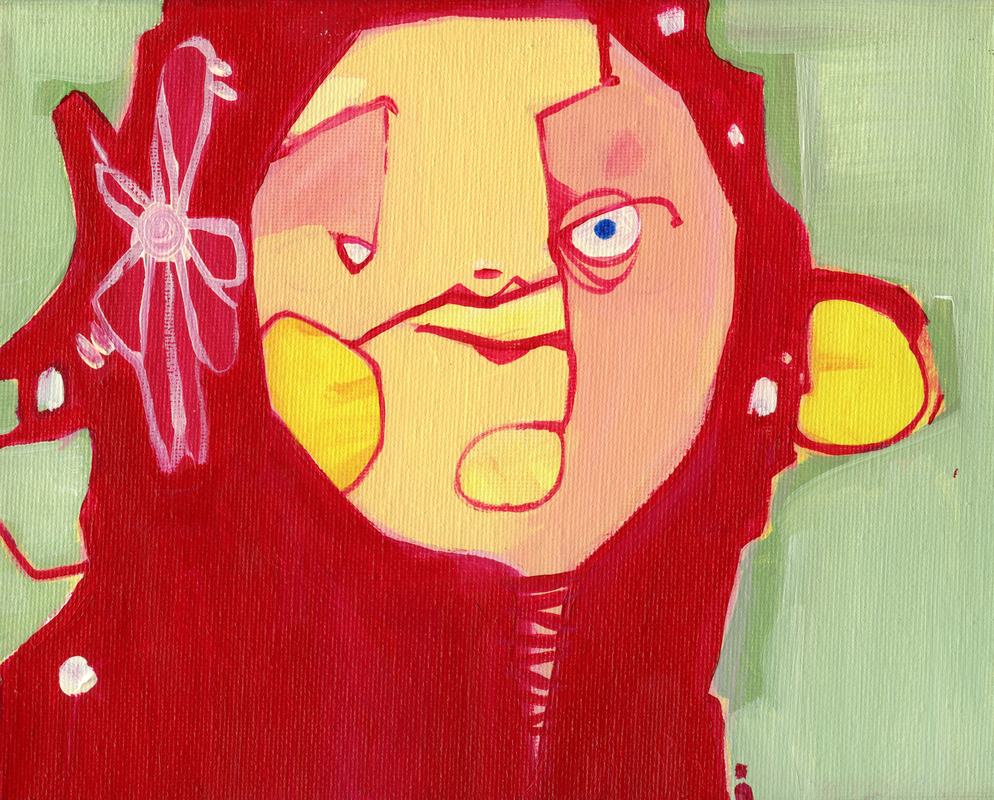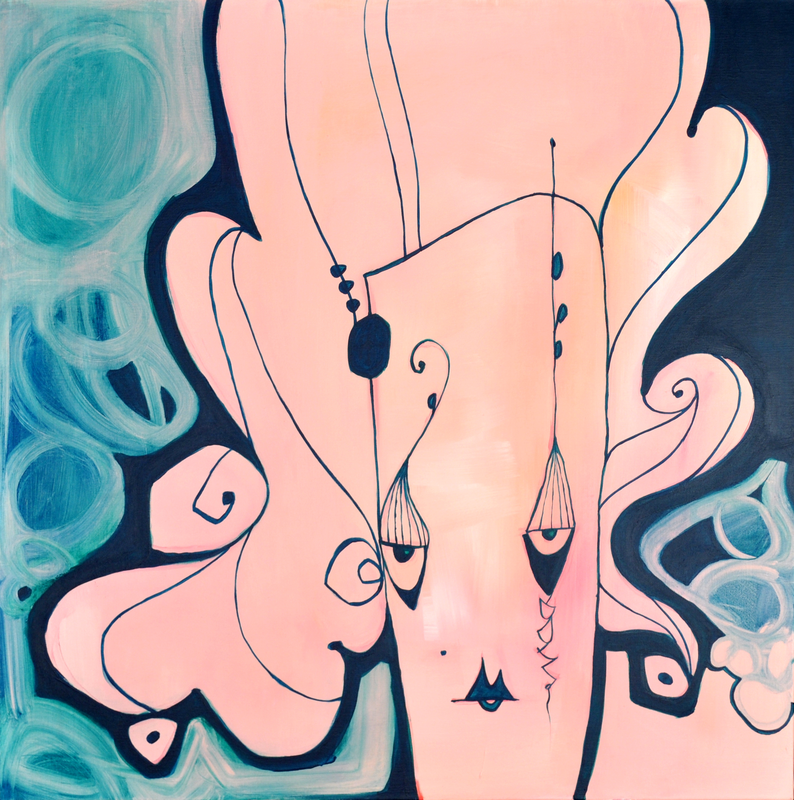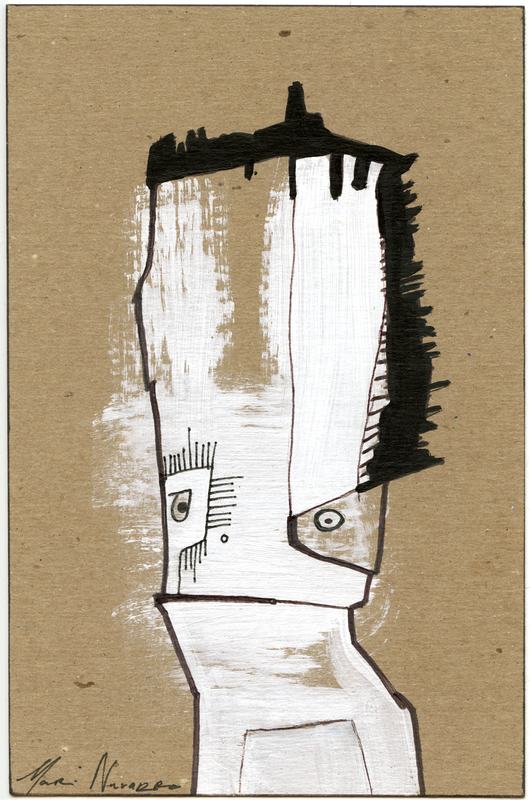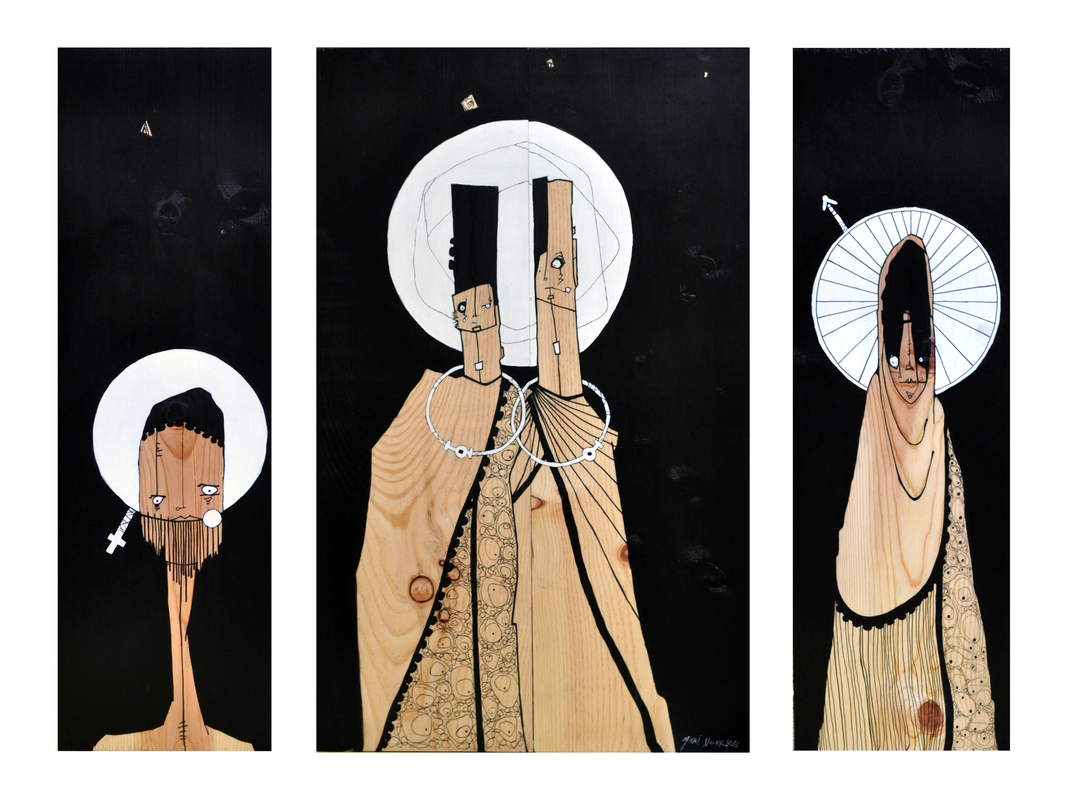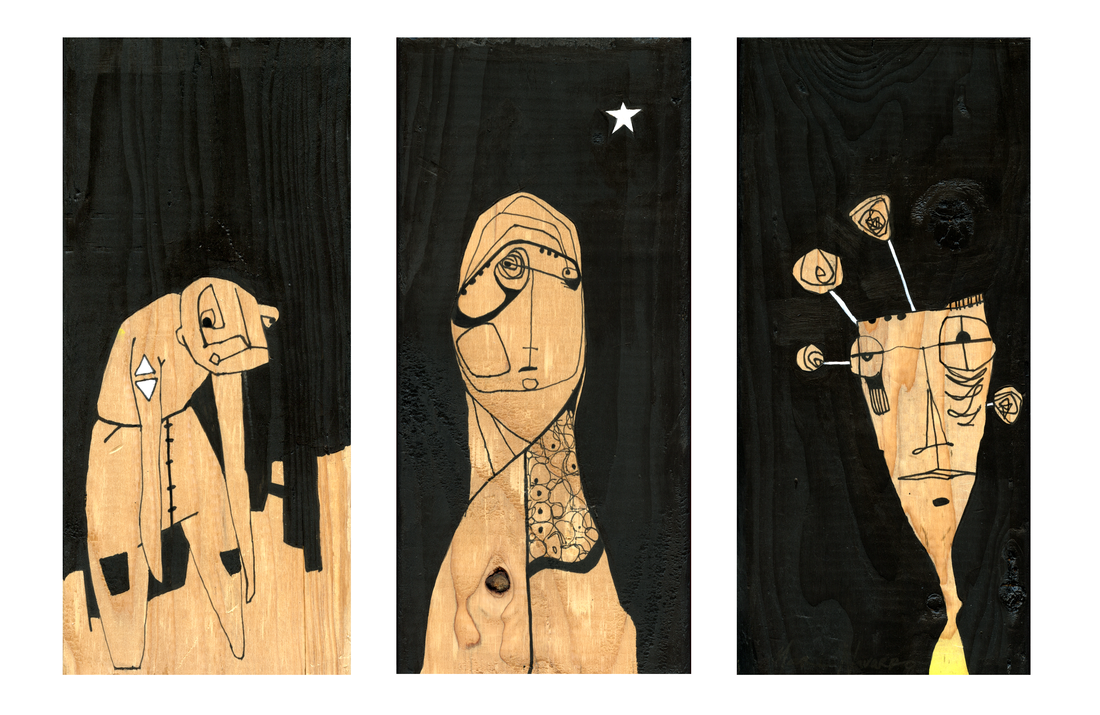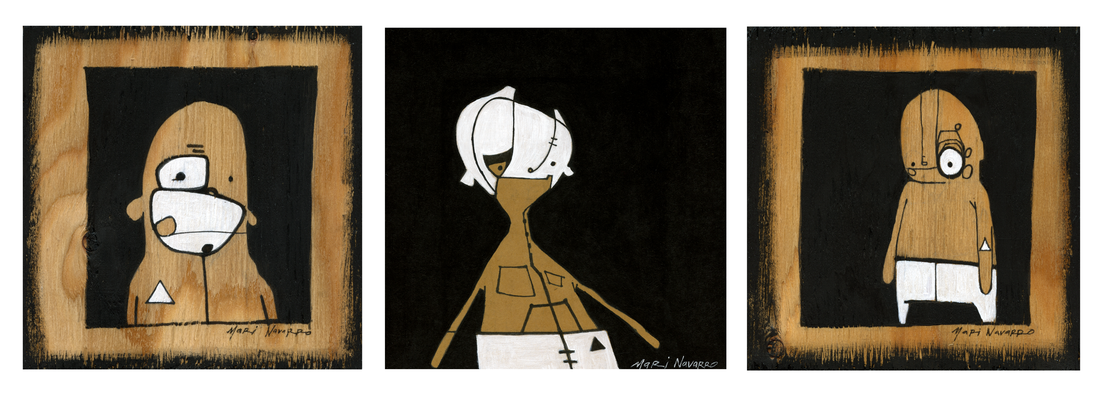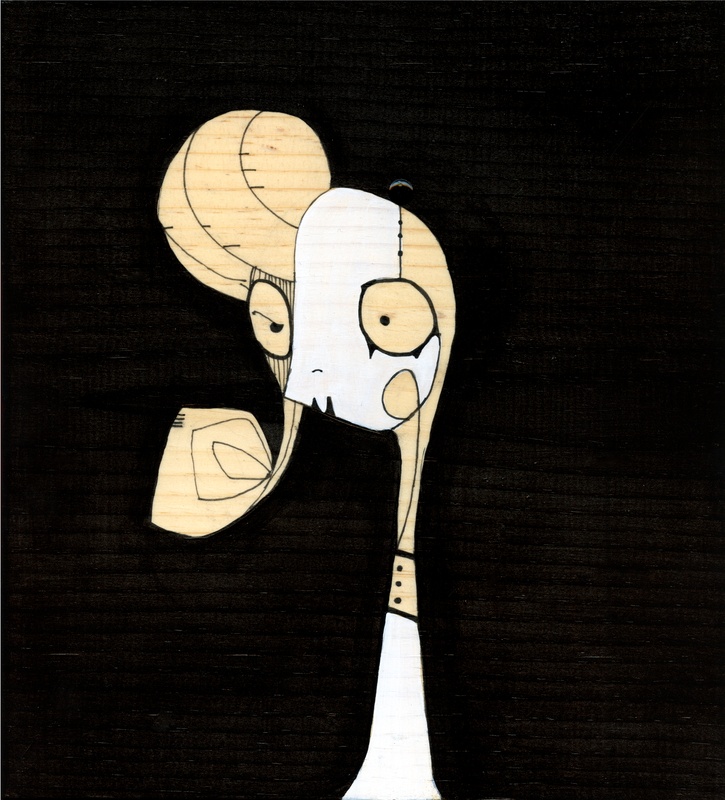Mari Navarro: Translating Advocacy
By Autumn Steam
Works of art that show the struggle of a group of people can be some of the most emotional and thought provoking means of changing a collective thought. Marri Navarro has dedicated her life to evolving her portrait painting skills into raising awareness for an oppressed queer community. Navarro spent much of her childhood in Chicago, Illinois, creating and learning about graffiti artists. “Through the 80's and 90's, I was influenced by the growing movement of graffiti. As a child I watched a lot of films and read through magazines on the graffiti genre. I immersed myself in that culture with friends and fellow "writers". A role model at that period was the street artist Lady Pink from NYC. She was one of the very first women graffiti artists. She was considered an equal in the male dominated graffiti movement, and that really was impressive to me. I wanted to be that type of role model. Graffiti really was my first introduction to art. I gained the knowledge of color, line quality, and composition. I was courted by well known graffiti groups at that time, but kept to my own with my painting and graffiti. This new found appreciation for graffiti was not well taken in school. I had plenty of sketch books confiscated. I sensed early on in my youth the wave of oppression that could take even from creative pursuits. Despite that, I still drew away in classes, and bathrooms, and school properties.” After high school Navarro took a year to figure out what she wanted to do. Her family was pressuring her to find a career, yet she finally decided to pursue art. “I enrolled in community college… [and] made it a point not to focus on socializing and once again emerged myself in everything took every art class I could. I then took the leap to The [School of the] Art Institute of Chicago where I received my BFA. I have to say that I enjoyed my experience more at my local community college then at the Art Institute, but as I grew older, I knew that the experience offered insight to who I would be as an artist. The Art Institute [of Chicago], had its own hurdles to overcome. They are a private school, and had strict guidelines on who was accepted. They did a portfolio review and interview before accepting you. I saw many kids with boxes of art work being carried away in tears because they got rejected. It really was heart breaking and stressful, but at that level you immediately got a taste of what the "art world" could be like. I have to say that I learned more on developing my character and integrity at SAIC then I did about art. I found much of the art instructors, with great knowledge but hindered by large egos.” The painting department teachers ran their classes like dictatorships and forced Navarro to switch to a better learning environment and, “…took up the Visual Communications dept, design. I figured I would develop my painting technique on my own. Despite the design department being a supplement for being in a creative class structure. I fell in love with it, and it sharpened my eye to the quality of my work. Design translated very well in nursing my painting skills. It was a useful supplement.” Now Navarro considers herself a non-traditional portrait painter. “I would best describe it using examples of two artists I appreciate like Chuck Close, a portrait painter, [and] Robert Lentz, an icon painter. From Close is technique and innovation in creating his portraits, and on the other side you have Lentz's work which is symbolic, spiritual, and strongly influenced by who he embodies and stands for. My work swings back and forth from those influences.” Navarro’s latest work on wood has become more graphic in nature because, “…I've toned down my color palette to just bw [black and white] portraits. I like the limitation of bw [black and white], and the immediacy of the graphic image that comes forth in my portraits. Very much like a print from a printmaker.” Her work has evolved over the years out of a focus, ”… on technique and developing a dominate image on canvas. I feel like my work lately is really about being a visual role model of who I am, and what I sympathize with. My work lately has been influenced by a 19th century English Lesbian Author Radclyffe Hall, who wrote the book "The Well of Loneliness"... [and] spiritual Christian iconography that depicts gay saints. Queer history, as well as spiritual history is of importance to me. I try to integrate those influences in my work. In my latest piece called "Invert Saints", the research and the inspiration from Radclyffe Hall sparked my latest images.” Her latest portraits reflect her advocacy for the queer community and the oppression it faces. “My influence for the 12x12 wood series came from gender benders. Drag queens like Divine, to RuPaul and his drag superstar show. I celebrate and support my queer community in most ways I can, and sometimes it’s through programming. I find RuPaul a wise role model and great advocate for our community. Ru' is very aware on the platform he is in, and works hard educating the norm into understanding the humanity in the drag community, as well as queer community. It’s a great show of empowerment after you get passed the entertainment aspect. So in my 12x12 series I used that influence to create those portraits. They also took on titles of some of my favorite "Queens". For my 5x12 Series, The series is ongoing and titled "Restless Saint", It's the other side of me that I find emerges in my portraits. In the series I am influenced by the oppressed, and how the queer community has its fight with oppression in two worlds; from the spiritual side to our general society. The pieces are subtle as much of my work is, I'm not looking for shock value, but I'm looking to raise awareness of our gay history and spiritual history. I believe that the term "restless saints", is very close to where the queer community has stood for much of history. We have freedoms, but still not quite a firm grasp on rights. On the 5x12 I focused on the surface I chose to paint them on. I also eliminated color to just Black and white. There is an underline language of spirituality and sacrifice in the pieces. I used the older unfinished wood on the 5x12 Restless Saints Series because It reminds me of the crucifixion. It adds to the meaning of the pieces and how we crucify the things we don't understand.” Each portrait Navarro paints is influenced by someone like, “…family, friends, authors, biblical characters, and queer role models,” and involves a little planning and lots of inspiration. “My mind abstracts them and recreates them in way that they become a new representation. It is very much like finding a new way of translating things. I also have many portraits that depict an emotional state. In the end, I feel that most of my characters take on traits of everything and everyone I encounter." She usually just starts painting and then shapes it as she works. “But planning does come in, with paintings that require more thought and insight. I really have to give myself time to loosen up, sometimes too many images and ideas come forth that block me from time to time when painting. Kind of like writers block, but it’s more of trying to convey something strongly and not always quiet finding it in a piece immediately.” Navarro spends her days balancing, “an honest living to pay what adulthood requires of me, but also find a way to paint or create something at my apartment. My studio is basically my home. I have your basics, which is a table and easel, with things piled up in a corner. Some days work gets the better of me, which hinders my time in my artistic corner. But I still make time to create. I try not to worry about having to work on it day and night, because my artistic drive fluctuates. I can find myself going 2 to 3 months just painting till I've reached a large amount of work, to periods when I can only afford weekend painting. I think the most important thing is to find time. Having a large amount of time or limit of it, doesn't really affect my drive. For example: I remember working 3rd shift 10pm to 8am and creating the most amount of work in that period, over 100 portraits in about 4 months. You just have to make time.” Recently moving to the Portland has made it hard to build a solid support system for but, “…Some periods are better than others, lately much of that support has come from the few artist or curators that have appreciated my work. I’m hoping that in time I will find a good supportive group of artistic colleagues that reside in Portland to collaborate with and share with. I think as an artist we all look for that social outlet, but being new to area hinders that for the time being. I hope in time that will change. Navarro has spent her 2 years in Portland trying to show in as many places as possible. “I think my work here has been well received. I've been very fortunate to show in places like Gallery 114, in downtown Portland; Holdfast Gallery in Seaside; as well as small independent galleries like Tyson Gallery in the Everette Lofts, in downtown Portland; and the Good A Gallery in Portland. Not to forget to mention the Peoples Art of Portland Gallery in Pioneer Place in downtown Portland...the reaction has been amazing. I’m happy to say that my work has sold in most of the places I've shown. I truly appreciate that, and really enjoy that people connect to my pieces and enjoy my work. I have been well pleased with the public’s reaction, despite knowing that it’s very hard for people in these times to purchase art.” Social networking is one challenge Navarro faces. “I have a website and Etsy page, and try to keep things updated. My girlfriend Leda Zawacki, a comic book artist and illustrator, has been the main motivator on reminding me to update my pages, and the strongly encouraged creating a website. She has really helped in creating a presence for me online. It has paid off in getting my work visually out there.” Mari Navarro’s future will, “Hopefully [be] selling much larger portraits with a studio. If it’s in a house that I own then it would be good enough for me. I hope in 5 years I continue to create work that has meaning and intent. To find my work sharpen as I age. In that artistic evolution that the future brings, hopefully [I will] find more doors open[ing]. See more of her work at www.marinavarro.com |
